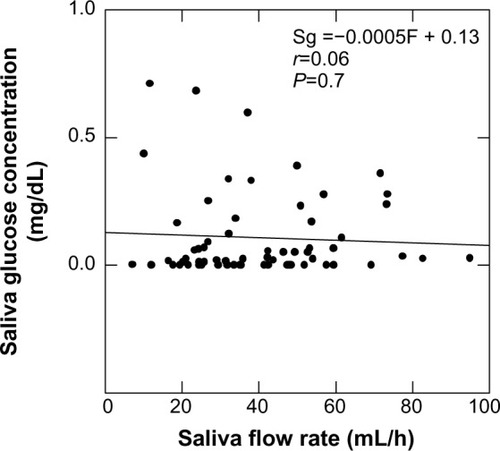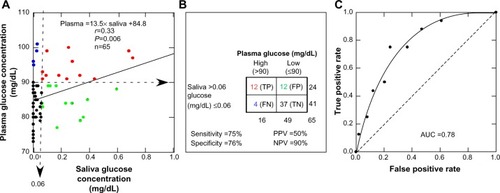Figures & data
Table 1 Within- and between-day CV measurements of glucose in saliva samples
Table 2 Population characteristics of the enrolled children
Figure 1 Saliva glucose concentration (Sg) as a function of salivary flow rate (F) by regression analysis.

Figure 2 Plasma glucose concentration as a function of salivary glucose concentration.
Abbreviations: TP, true positive (red); FP, false positive (green); TN, true negative (black), FN, false negative (blue); PPV, positive predictive value; NPV, negative predictive value; AUC, area under the curve.

Table 3 Representative studies that provide analytical data for evaluating the relationship between salivary glucose and blood glucose concentrations as a threshold response
